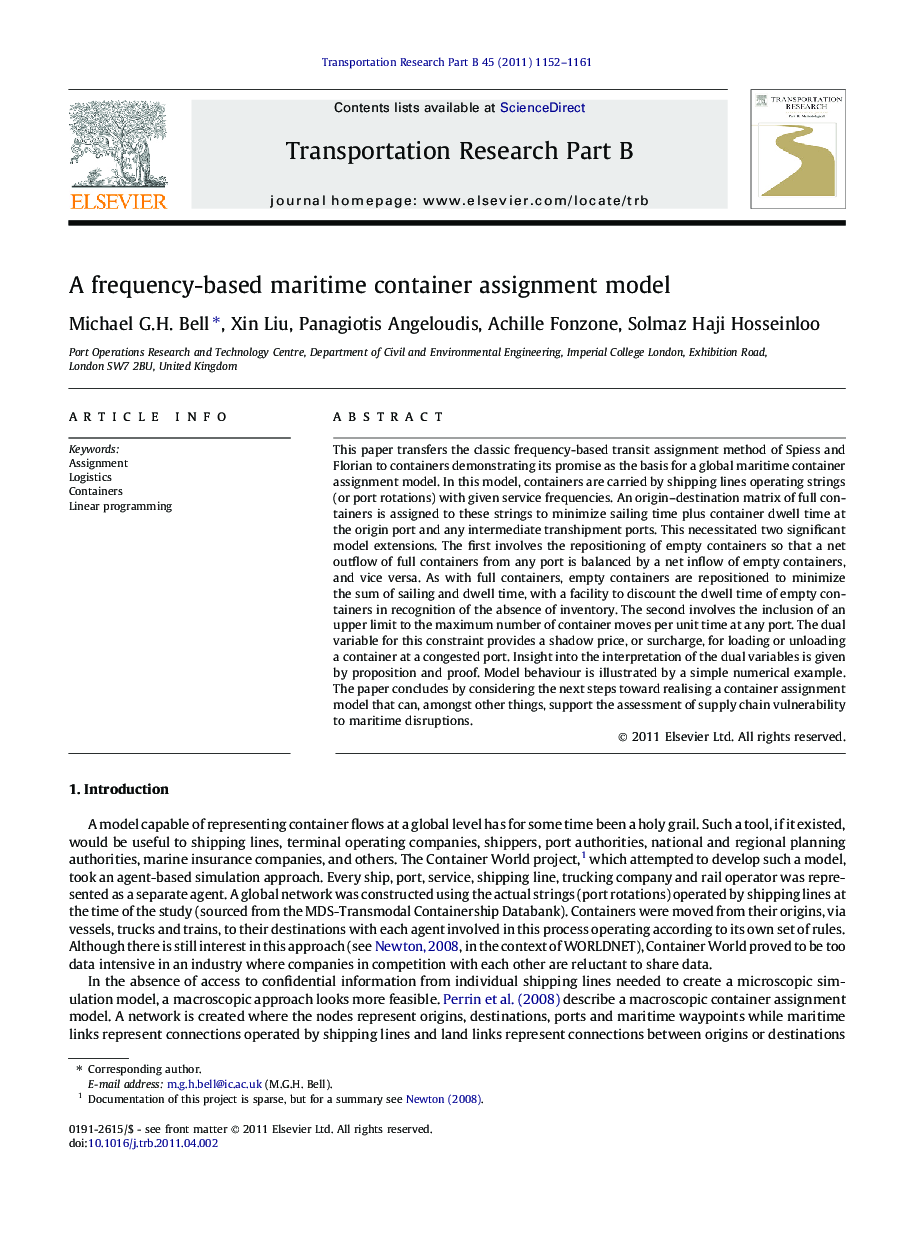| کد مقاله | کد نشریه | سال انتشار | مقاله انگلیسی | نسخه تمام متن |
|---|---|---|---|---|
| 1132397 | 955776 | 2011 | 10 صفحه PDF | دانلود رایگان |

This paper transfers the classic frequency-based transit assignment method of Spiess and Florian to containers demonstrating its promise as the basis for a global maritime container assignment model. In this model, containers are carried by shipping lines operating strings (or port rotations) with given service frequencies. An origin–destination matrix of full containers is assigned to these strings to minimize sailing time plus container dwell time at the origin port and any intermediate transhipment ports. This necessitated two significant model extensions. The first involves the repositioning of empty containers so that a net outflow of full containers from any port is balanced by a net inflow of empty containers, and vice versa. As with full containers, empty containers are repositioned to minimize the sum of sailing and dwell time, with a facility to discount the dwell time of empty containers in recognition of the absence of inventory. The second involves the inclusion of an upper limit to the maximum number of container moves per unit time at any port. The dual variable for this constraint provides a shadow price, or surcharge, for loading or unloading a container at a congested port. Insight into the interpretation of the dual variables is given by proposition and proof. Model behaviour is illustrated by a simple numerical example. The paper concludes by considering the next steps toward realising a container assignment model that can, amongst other things, support the assessment of supply chain vulnerability to maritime disruptions.
► The frequency-based transit assignment method is transferred to containers.
► Full containers are assigned to routes to minimize sailing plus dwell time.
► Empty containers are repositioned to minimize sailing plus discounted dwell time.
► The number of container moves per unit time at any port is limited to port capacity.
► Dual variables define surcharges for loading or unloading a container at a congested port.
Journal: Transportation Research Part B: Methodological - Volume 45, Issue 8, September 2011, Pages 1152–1161